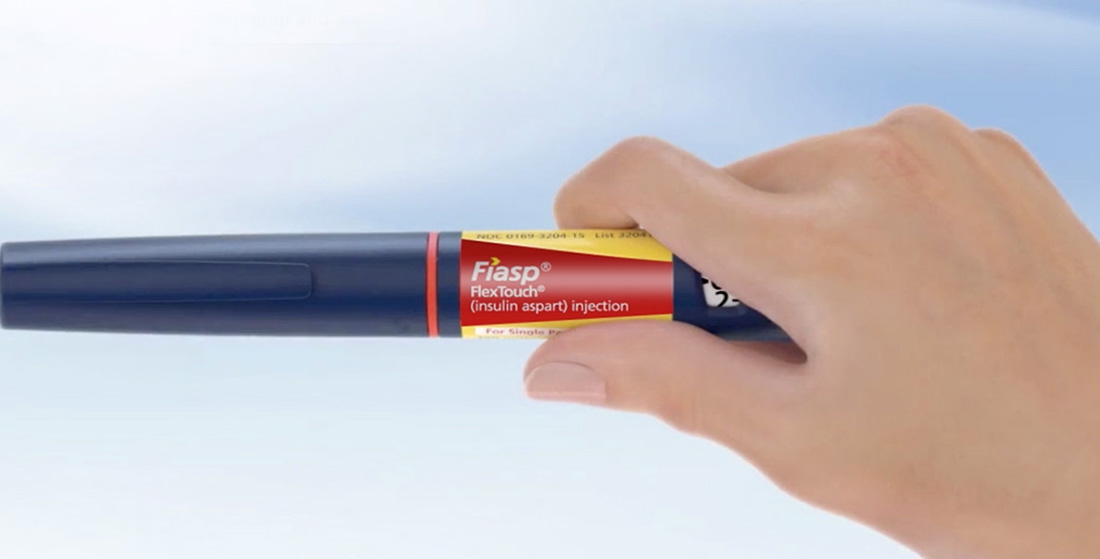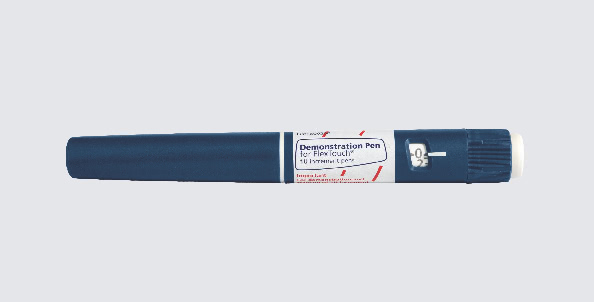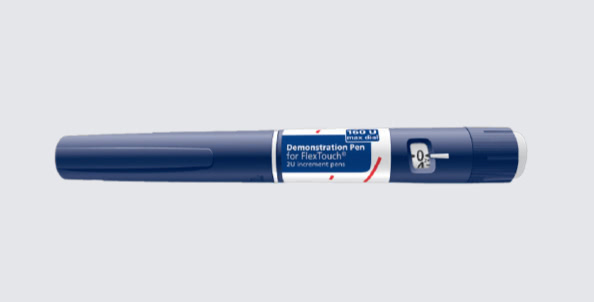
Fiasp® Instructions for Use
Step-by-step, patient-friendly instructions on using the Fiasp® FlexTouch® pen. You may also view illustrated, step-by-step instructions.
We've created additional resources to address your questions.
Indications and Usage for Fiasp® (insulin aspart) injection 100 U/mL
Fiasp® (insulin aspart) injection 100 U/mL is a rapid-acting insulin analog indicated to improve glycemic control in adult and pediatric patients with diabetes mellitus.
Important Safety Information
Contraindications
- Fiasp® is contraindicated during episodes of hypoglycemia and in patients hypersensitive to Fiasp® or one of its excipients.
Warnings and Precautions
- Never share a Fiasp® FlexTouch® Pen, PenFill® cartridge or PenFill® cartridge device between patients, even if the needle is changed. Patients using Fiasp® vials must never share needles or syringes with another person. Sharing poses a risk for transmission of blood-borne pathogens.
- Hyperglycemia or Hypoglycemia with Changes in Insulin Regimen: Changes in an insulin regimen (e.g., insulin strength, manufacturer, type, injection site or method of administration) may affect glycemic control and predispose to hypoglycemia or hyperglycemia. Repeated insulin injections into areas of lipodystrophy or localized cutaneous amyloidosis have been reported to result in hyperglycemia; and a sudden change in the injection site (to an unaffected area) has been reported to result in hypoglycemia. Make any changes to a patient’s insulin regimen under close medical supervision with increased frequency of blood glucose monitoring. Advise patients who have repeatedly injected into areas of lipodystrophy or localized cutaneous amyloidosis to change the injection site to unaffected areas and closely monitor for hypoglycemia. Adjustments in concomitant anti-diabetic treatment may be needed.
- Hypoglycemia is the most common adverse reaction of insulin, including Fiasp®, and may be life-threatening. Increase glucose monitoring with changes to: insulin dosage, co-administered glucose lowering medications, meal pattern, physical activity; and in patients with renal impairment or hepatic impairment or hypoglycemia unawareness.
- To avoid medication errors and accidental mix-ups between Fiasp® and other insulin products, instruct patients to always check the insulin label before injection.
- As with all insulins, Fiasp® use can lead to life-threatening hypokalemia, which then may cause respiratory paralysis, ventricular arrhythmia, and death. Monitor potassium levels in patients at risk for hypokalemia and treat if indicated.
- Severe, life-threatening, generalized allergy, including anaphylaxis, may occur with insulin products, including Fiasp®.
- Fluid retention and heart failure can occur with concomitant use of thiazolidinediones (TZDs), which are PPAR-gamma agonists, and insulin, including Fiasp®. Patients should be observed for signs and symptoms of heart failure. If heart failure occurs, dosage reduction or discontinuation of the TZD must be considered.
- Pump or infusion set malfunctions can lead to a rapid onset of hyperglycemia and ketoacidosis. Prompt identification and correction of the cause of hyperglycemia or ketosis is necessary. Interim therapy with subcutaneous injection of Fiasp® may be required. Patients using continuous subcutaneous insulin infusion pump therapy must be trained to administer insulin by injection and have alternate insulin therapy available in case of pump failure.
Drug Interactions
- Drugs That May Increase the Risk of Hypoglycemia: Antidiabetic agents, ACE inhibitors, angiotensin II receptor blocking agents, disopyramide, fibrates, fluoxetine, monoamine oxidase inhibitors, pentoxifylline, pramlintide, salicylates, somatostatin analogs (e.g., octreotide), and sulfonamide antibiotics. Dose reductions and increased frequency of glucose monitoring may be required.
- Drugs That May Decrease the Blood Glucose Lowering Effect of Fiasp®: Atypical antipsychotics (e.g., olanzapine and clozapine), corticosteroids, danazol, diuretics, estrogens, glucagon, isoniazid, niacin, oral contraceptives, phenothiazines, progestogens (e.g., in oral contraceptives), protease inhibitors, somatropin, sympathomimetic agents (e.g., albuterol, epinephrine, terbutaline), and thyroid hormones. Dose increases and increased frequency of glucose monitoring may be required.
- Drugs That May Increase or Decrease the Blood Glucose Lowering Effect of Fiasp®: Alcohol, beta-blockers, clonidine, and lithium salts. Pentamidine may cause hypoglycemia, which may sometimes be followed by hyperglycemia. Dose adjustment and increased frequency of glucose monitoring may be required.
- Drugs That May Blunt Signs and Symptoms of Hypoglycemia: Beta-blockers, clonidine, guanethidine, and reserpine. Increased frequency of glucose monitoring may be required
Adverse Reactions
- Adverse reactions observed with Fiasp® include hypoglycemia, allergic reactions, hypersensitivity, injection site reactions, lipodystrophy, and weight gain.
Use in Specific Populations
- Pediatric patients with type 1 diabetes treated with mealtime and postmeal Fiasp® reported a higher rate of blood glucose confirmed hypoglycemic episodes compared to patients treated with NovoLog® (insulin aspart) injection; the imbalance was greater during the nocturnal period. Monitor blood glucose levels closely in pediatric patients.
- Like all insulins, Fiasp® requirements may be reduced in patients with renal impairment or hepatic impairment. These patients may require more frequent blood glucose monitoring and dose adjustments.
Please click here for Fiasp® Prescribing Information.

